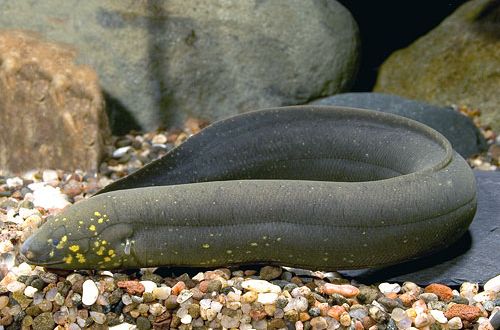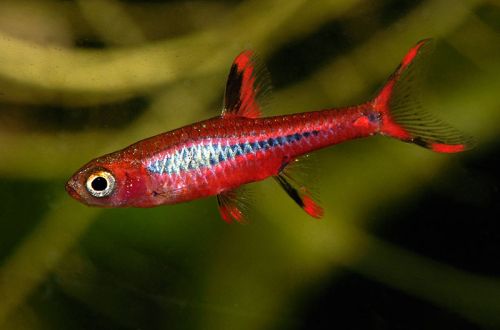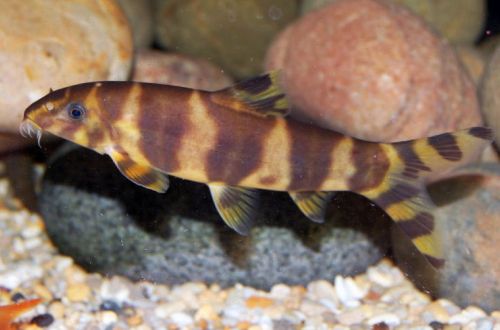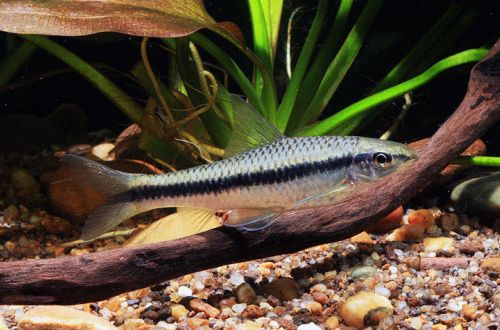
Lepidosuren
The American flake or Lepidosiren, scientific name Lepidosiren paradoxa, belongs to the Lepidosireniformes family. Also known as the Amazon lungfish. It looks like a snake or an eel. The main feature is the ability to breathe atmospheric air and hibernate for up to several years, although the latter does not occur in an aquarium.

Contents
Habitat
It comes from South America, inhabits the vast Amazon River basin, covering almost half of the continent. It lives everywhere, most often found in regions with slow flow or stagnant water – in swamps and backwaters, which regularly dry up during the rainy season. The natural habitat is variable and characterized by low levels of dissolved oxygen.
Brief information:
- The volume of the aquarium – from 200 liters.
- Water and air temperature – 24-28°C
- Value pH — 6.0–8.0
- Water hardness – soft to high hardness (2-20 dGH)
- Substrate type – sandy, silty
- Lighting – subdued, dim
- Brackish water – no
- Water movement – little or no
- The size of the fish is about 120 cm.
- Food – any food
- Temperament – peaceful
- Content alone or in a group
- Life expectancy about 20 years
Description
Adult individuals reach a length of up to 120 cm. Sexual dimorphism is weakly expressed, there are no obvious differences between male and female. The fish has a long snake-like body. The pectoral and anal fins have changed into limbs designed to move along the bottom or surface. The tail is broad and pointed. Fish swim by undulating movements like snakes or eels. The coloration is dark; young individuals may have bright yellow spots.
Food
An omnivorous species, in the wild it feeds on everything that can fit in its mouth: stems, leaves and fruits of plants, insects, mollusks, crustaceans, other fish. In the home aquarium, it is also not picky about the diet and can accept similar products. Feed 2-3 times a week.
Maintenance and care, arrangement of the aquarium
The Amazon lungfish, although large in size, does not require a huge aquarium, as it leads a sedentary lifestyle. The tank should allow the fish to stretch out to its full length, and its volume can start from 200 liters. In the design, many shelters in the form of snags are used, and areas with dense vegetation are also formed. The lighting is subdued, floating plants can serve as an additional means of shading. The surface must be free from obstacles so that the fish can swallow another portion of air, otherwise it can simply drown.
The content is quite simple, taking into account the conditions under which Lepidosiren has to live in nature. The high quality of the water is maintained by an efficient filtration system and its weekly replacement by 30% of the volume. It is also important to regularly remove organic waste. Aquarium equipment must be securely fixed or located outside, otherwise it is likely to be damaged by fish.
Behavior and Compatibility
It is distinguished by a peaceful calm disposition, can live both alone and together with relatives. Gets along well with other non-aggressive large fish. It is worth remembering that any small fish, shrimp and shellfish can be her dinner.
Breeding / breeding
They do not breed in captivity. In nature, spawning takes place in deep tunnels that fish dig in the muddy bottom. The fry are outwardly different from adults, having external gills like those of newts. Only after 7 weeks does metamorphosis occur and they take their usual form.
Fish diseases
Such a hardy species rarely falls ill if kept in favorable conditions. It successfully adapts even to the deterioration of the habitat. But experimenting with this is not worth it, because in nature the fish goes into hibernation underground, and this is unlikely to work out in an aquarium. However, illness cannot be guaranteed. Read more about the symptoms and treatment methods in the section “Diseases of aquarium fish”.





